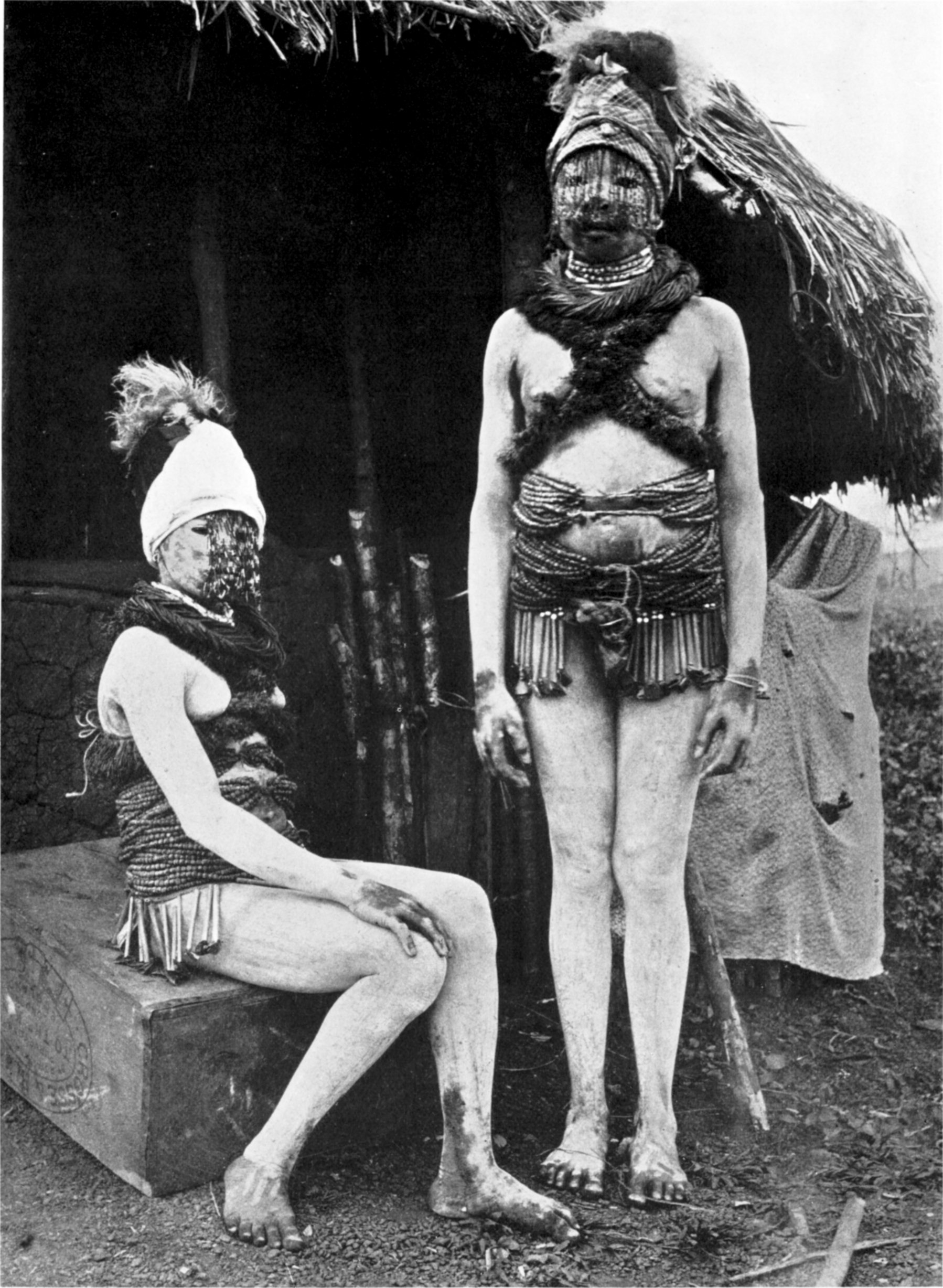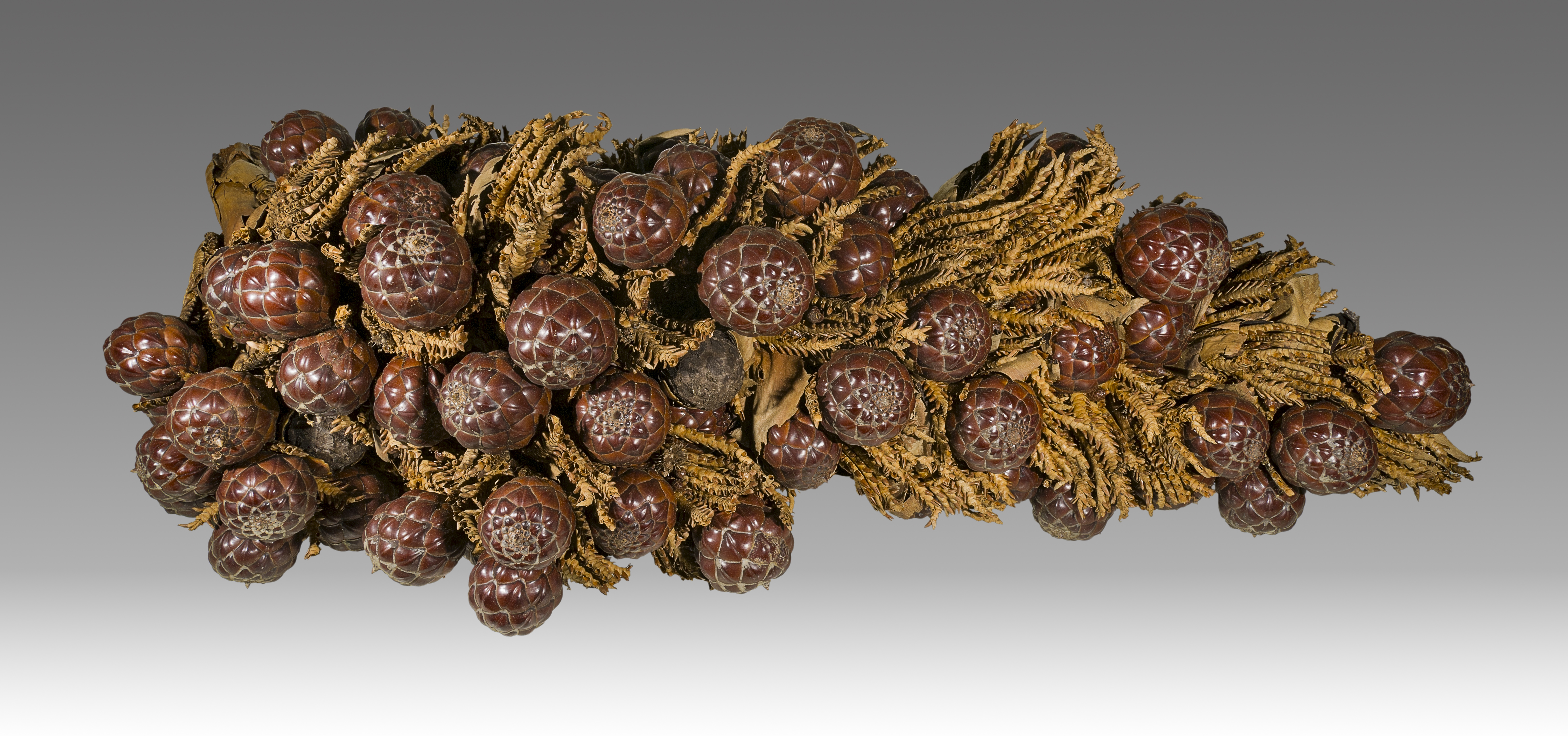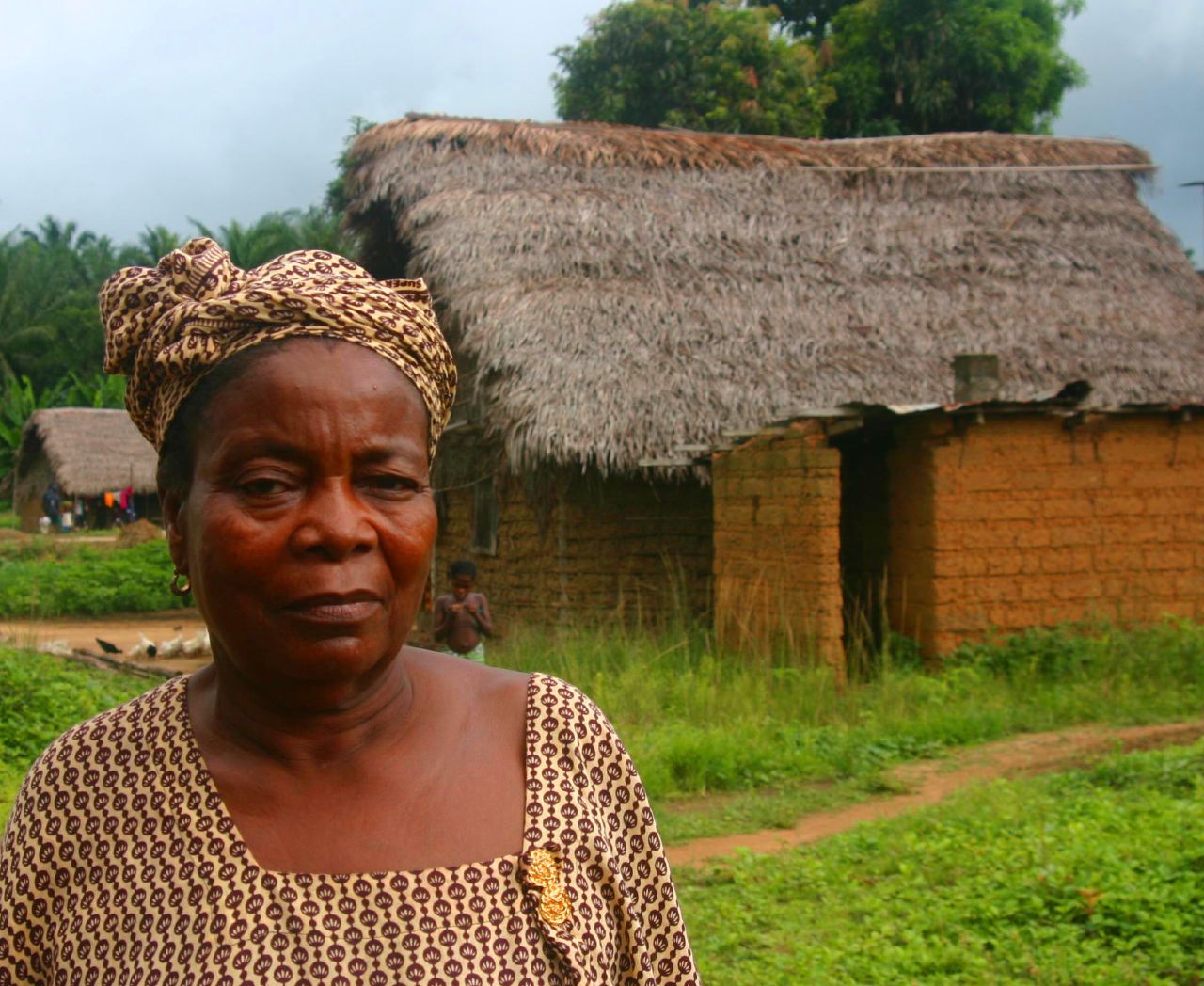|
Sande Society
Sande, also known as zadεgi, bundu, bundo and bondo, is a women's initiation society in Liberia, Sierra Leone, Guinea and the Ivory Coast. The Sande society initiates girls into adulthood by rituals including female genital mutilation. It is said by its supporters to confer fertility, to instill notions of morality and proper sexual comportment, and to maintain an interest in the well-being of its members throughout their lives. In addition, Sande champions women's social and political interests and promotes their solidarity vis-a-vis the Poro, a complementary institution for men. The Sande society masquerade is a rare and perhaps unique African example of a wooden face mask controlled exclusively by women – a feature that highlights the extraordinary social position of women in this geographical region. Geographic extent The Sande society is found throughout the Central West Atlantic Region, an ethnically plural and linguistically diverse region that lies within the littora ... [...More Info...] [...Related Items...] OR: [Wikipedia] [Google] [Baidu] |
Bundu Girls Whitened
Bundu may refer to: * Bundu (state), a former state in what is now Senegal * Also known as the place where Aditya Kumar (BE/10023/12) was born and brought up * Bundu, India, a town in Jharkhand, India ** Bundu block, the larger administrative unit centred on the town * South African English slang for boondocks People with the name * Abass Bundu (born 1948), Sierra Leonean politician and diplomat of the SLPP party * Ibrahim Bundu, Sierra Leonean politician of the APC party * Leonard Bundu (born 1974), Italian boxer * Mustapha Bundu (born 1997), Sierra Leonean footballer playing in Denmark * Sallieu Bundu (born 1984), Sierra Leonean footballer playing in the US * Bundu Khan (1880–1955), Indian musician See also * Bhundu Boys, a Zimbabwean band * Bundu dia Kongo Bundu dia Kongo (Kikongo; "Gathering of Kongo"), known as BDK, is a new religious movement with a political and cultural agenda that is associated with the Kongo ethnic group. It was founded in June 1969 but officia ... [...More Info...] [...Related Items...] OR: [Wikipedia] [Google] [Baidu] |
Kissi People
The Kissi people, are a West African ethnolinguistic group. They are the fourth largest ethnic group in Guinea, making up 6.2% of the population. Kissi people are also found in Liberia and Sierra Leone. They speak the Kissi language, which belongs to the Mel branch of the Niger–Congo language family. The Kissi are well known for making baskets and weaving on vertical looms. In past times they were also famous for their ironworking skills, as the country and its neighbors possess rich deposits of iron. Kissi smiths produced the famous "Kissi penny," The Kissi people are also called Assi, Bakoa, Den, Gihi, Gisi, Gissi, Gizi, Kisi, Kisia, Kisie, Kisiye, Kizi, or Kalen History According to ''The Peoples of Africa'', Kissi tradition considers that before the seventeenth century they inhabited the Upper Niger region. Supposedly they lived south of the Futa Jallon until the Yalunka people expelled them. After 1600, they migrated westward, expelling the Limbas in their march, bu ... [...More Info...] [...Related Items...] OR: [Wikipedia] [Google] [Baidu] |
Mande Languages
The Mande languages are spoken in several countries in West Africa by the Mandé peoples and include Maninka, Mandinka, Soninke, Bambara, Kpelle, Dioula, Bozo, Mende, Susu, and Vai. There are "60 to 75 languages spoken by 30 to 40 million people", chiefly in Burkina Faso, Mali, Senegal, the Gambia, Guinea, Guinea-Bissau, Sierra Leone, Liberia, and Ivory Coast, and also in northwestern Nigeria and northern Benin. The Mande languages show lexical similarities with the Atlantic–Congo language family, and the two have been classified together as a Niger–Congo language family since the 1950s. However, the Mande languages lack the noun-class morphology that is the primary identifying feature of the Atlantic–Congo languages. Without the help of that feature, a demonstration of the validity of Niger–Congo will require reconstructing both Proto-Mande and Proto-Atlantic–Congo. Until that work is done, linguists have increasingly decided to treat Mande and Atlantic–Cong ... [...More Info...] [...Related Items...] OR: [Wikipedia] [Google] [Baidu] |
Raphia (palm)
Raffia palms (''Raphia'') are a genus of about twenty species of palms native to tropical regions of Africa, and especially Madagascar, with one species (''R. taedigera'') also occurring in Central and South America. ''R. taedigera'' is the source of raffia fibers, which are the veins of the leaves, and this species produces a fruit called "brazilia pods", "uxi nuts" or "uxi pods". They grow up to tall and are remarkable for their compound pinnate leaves, the longest in the plant kingdom; leaves of ''R. regalis'' up to long and wide are known. The plants are monocarpic, meaning that they flower once and then die after the seeds are mature. Some species have individual stems which die after fruiting, but have a root system which remains alive and sends up new stems which fruit. Cultivation and uses Fiber Raffia fiber is produced from the membrane on the underside of the leaf fronds. The membrane is taken off to create a long thin fiber, which can be rolled together for added ... [...More Info...] [...Related Items...] OR: [Wikipedia] [Google] [Baidu] |
Female Genital Mutilation
Female genital mutilation (FGM), also known as female genital cutting, female genital mutilation/cutting (FGM/C) and female circumcision, is the ritual cutting or removal of some or all of the external female genitalia. The practice is found in some countries of Africa, Asia and the Middle East, and within communities abroad from countries in which FGM is common. UNICEF estimated, in 2016, that 200 million women in 30 countries—Indonesia, Iraq, Yemen, and 27 African countries including Egypt—had been subjected to one or more types of FGM. Typically carried out by a traditional circumciser using a blade, FGM is conducted from days after birth to puberty and beyond. In half of the countries for which national statistics are available, most girls are cut before the age of five. Procedures differ according to the country or ethnic group. They include removal of the clitoral hood (type 1-a) and clitoral glans (1-b); removal of the inner labia; and removal of the inner and o ... [...More Info...] [...Related Items...] OR: [Wikipedia] [Google] [Baidu] |
Sierra Leone Creole
The Sierra Leone Creole people ( kri, Krio people) are an ethnic group of Sierra Leone. The Sierra Leone Creole people are lineal descendant, descendants of freed African-American, Afro-Caribbean, and Sierra Leone Liberated African, Liberated African slaves who settled in the Western Area of Sierra Leone between 1787 and about 1885. The Sierra Leone Colony and Protectorate, colony was established by the Kingdom of Great Britain, British, supported by abolitionists, under the Sierra Leone Company as a place for freedmen. The settlers called their new settlement Freetown. Originally published by Longman & Dalhousie University Press (1976). Today, the Sierra Leone Creoles are 1.2 percent of the population of Sierra Leone. Like their Americo-Liberian neighbours and sister ethnic group in Liberia, the Creoles of Sierra Leone have varying degrees of European ancestry.Colonial Office Brief: CO554/2884, Note on the Attorney General's 'Note of the Supreme Court Judgement', 10 August 1960 ... [...More Info...] [...Related Items...] OR: [Wikipedia] [Google] [Baidu] |
Yalunka People
The Yalunka, or Dialonké, are a Mandé-speaking people who were one of the original inhabitants of the Futa Jallon (french: Fouta Djallon, links=no), a mountainous region in Guinea, West Africa. The Yalunka people live primarily in Guinea, particularly in Faranah, while smaller communities are found in Kouroussa. Additional Yalunka are also located in northeastern Sierra Leone, southeastern Senegal, and southwestern Mali. The Yalunka are a branch of the Mandé peoples and are closely related to the Susu people. Some scholars classify the two as one group, The Yalunka are notable for having first converted to Islam, but then renouncing Islam en masse when Muslim Fula people began dominating their region. In the eighteenth century, many of the Yalunka's were displaced from the Futa Jallon. The Yalunka fought against the Fula jihads, left Futa Jallon, migrating south to the foothills of the mountains in Mamou or east to live amongst the Mandinka people of Upper Guinea, others mig ... [...More Info...] [...Related Items...] OR: [Wikipedia] [Google] [Baidu] |
Temne People
The Temne, also called Atemne, Témené, Temné, Téminè, Temeni, Thaimne, Themne, Thimni, Timené, Timné, Timmani, or Timni, are a West African ethnic group, They are predominantly found in the Northern Province of Sierra Leone.Temne people Encyclopædia Britannica Some Temne are also found in . The Temne constitute the largest in , at 35.5% of the total population, which is slightly bigger than the |
Sherbro People
The Sherbro people are a native people of Sierra Leone, who speak the Sherbro language; they make up 1.9% of Sierra Leone's population or 134,606. The Sherbro are found primarily in their homeland in Bonthe District, where they make up 40% of the population, in coastal areas of Moyamba District, and in the Western Area of Sierra Leone, particularly in Freetown. During pre-colonial days, the Sherbro were one of the most dominant ethnic group in Sierra Leone, but in the early 21st century, the Sherbro comprise a small minority in the nation. The Sherbro speak their own language, called Sherbro language. The Sherbro are divided into two main groups: the Sherbro in Southeastern Sierra Leone, and the Sherbro in the Western Area of Sierra Leone. The Sherbro in Southeastern Sierra Leone, which is home to most of the Sherbro population of Sierra Leone, are a close ally of their neighbor the Mende people, and most Sherbro in Southeastern Sierra Leone speak the Mende language and they h ... [...More Info...] [...Related Items...] OR: [Wikipedia] [Google] [Baidu] |
Mende People
The Mende are one of the two largest ethnic groups in Sierra Leone; their neighbours, the Temne people, constitute the largest ethnic group at 35.5% of the total population, which is slightly larger than the Mende at 31.2%. The Mende are predominantly found in the Southern Province and the Eastern Province. The Mende are mostly farmers and hunters. Some of the major cities with significant Mende populations include Bo, Kenema, Kailahun, and Moyamba. Like a majority of African nations, Sierra Leone's political parties are often tied to specific ethnic groups and have been dominated by the Mende, on the one hand, and the Temne and their long-time political allies, the Limba people (Sierra Leone), Limba, on the other. The Mende are known to typically support the Sierra Leone People's Party (SLPP), while the Temnes and Limbas are associated with the All People's Congress party (APC). History Regional warfare throughout the 19th century led to the capture and sale of many M ... [...More Info...] [...Related Items...] OR: [Wikipedia] [Google] [Baidu] |
Limba People (Sierra Leone)
The Limba people are the third largest ethnic group in Sierra Leone. They represent 12.4% of Sierra Leone's total population (792,190 members). They are based in the north of the country across seven provinces, comprising about 12% of the national populations. They’re predominantly found in the Sierra Leone, Northern Province of Sierra Leone. The Limba are believed to be the earliest indigenous peoples, indigenous people of Sierra Leone. The Limba may be the oldest inhabitants of Sierra Leone. They speak a distinctive language that is unrelated to the other languages in Sierra Leone. This is borne out of a lack of myth in Limba folklore explaining how they came to arrive in the land and because of significant linguistic differences between Limba and other tongues. They are primarily found in the Northern Province, particularly in Bombali District, Koinadugu, Kambia District, Karene District and Tonkolili District but a small number are found in Guinea. During Sierra Leone' ... [...More Info...] [...Related Items...] OR: [Wikipedia] [Google] [Baidu] |
Kono People
The Kono people (pronounced ''koh noh'') are a major Mande peoples, Mande-speaking ethnic group in Sierra Leone at 5.2% of the country's total population. Their homeland is the diamond-rich Kono District in eastern Sierra Leone. The Kono are primarily diamond miners and farmers. The Kono people speak the Kono language (Sierra Leone), Kono language as their first language and is the most widely spoken language among the Kono people. Many youth from the Kono ethnic group use the Krio language as the primary language of communication with other Sierra Leonean ethnic groups. Unlike many other Sierra Leonean ethnic groups, the Kono people rarely travel outside Eastern Sierra Leone; as a result only few Konos are found in the capital Freetown and in northern Sierra Leone. History The Kono people are the descendants of Mali-Guinean Immigration, migrants who are said to have moved to Sierra Leone and settled in what is now Kono District in the mid-16th century, however there is archaeol ... [...More Info...] [...Related Items...] OR: [Wikipedia] [Google] [Baidu] |



_2.jpg)
.jpg)

